Published 26 Feb 2025
High-quality curriculum and instruction teaching students the foundations of reading, language and literacy - Penleigh and Essendon Grammar
Engaged students in learning
Bernadette Eve – Primary Teacher and Literacy Specialist
Penleigh and Essendon Grammar
Schools and early childhood services across Victoria continue to provide quality learning experiences across all levels. The VIT’s Professional Practice team is privileged to see this work first-hand on visits to workplaces around the state. This is just one example showcasing the great work happening in a Victorian school.
Bernadette Eve is a Primary Teacher and Literacy Specialist at Penleigh and Essendon Grammar’s (PEGS) all-boys junior campus. Bernadette is passionate about creating a supportive learning environment that strengthens young learners’ foundational literacy skills whilst nurturing their natural curiosity and engagement.
Through a renewed focus on explicit instruction to improve the literacy outcomes of students, the PEGS team were able to increase teacher pedagogical skills and highlight the importance of using high-quality curriculum to teach students the foundations of reading, language and literacy.
Q: Can you provide some background to your approach in developing the initiative, including any research or established models / strategies that your approach is based upon?
Setting our students up for success starts on day one of Prep.
Each student undergoes a one-on-one literacy interview. The assessment interview is comprehensive yet informal and conducted in the literacy support room filled with books, games and toys. Students are given time to look around the room which quickly generates conversations about their family, holidays, kindergarten, toys and movies. Within minutes, observations of speech, attention span, body language, auditory processing and confidence levels are noted. This long-standing assessment method accurately identifies students with literacy needs and forms the initial small literacy withdrawal groups.
Literacy testing data from the assessments are used to screen for students who require additional literacy support. Over the course of their learning journey, regular systematic monitoring takes place weekly.
From there, our PEGS Junior Boys School Literacy Program is informed by contemporary literacy research and evidence. Based on the Australian Get Reading Right synthetic phonics program created by Jo-Anne Dooner.
Our program is structured and intentional - with a focus on teaching foundational literacy skills through the explicit teaching of phonics. It is not a scripted program but follows the structure of teacher time, together time and student time. In teacher time, the expectation is for students to listen and focus. The teacher outlines the activities for the session, expectations and learning intentions. This is followed by a warm-up which could consist of automatic recall of phonemes via a PowerPoint or flash cards, kinaesthetic activity using the body to replicate the shapes of letters, listening to a story and using fingers to decode and blend words. The together time component relies on explicit modelling by the expert - the teacher.
Activities such as using a flip book, memory games, matching words to pictures, writing on white boards and sounding out words with your fingers as a visual cue are teacher-led. The cognitive load is minimised by clear and simple instructions. Student time provides an opportunity for students to exercise and consolidate their skills. A simple five-minute activity such as filling in the missing word, copying words from the board, reading decodable books or playing snap or memory with a partner gives the teacher the perfect opportunity to observe the level of development.
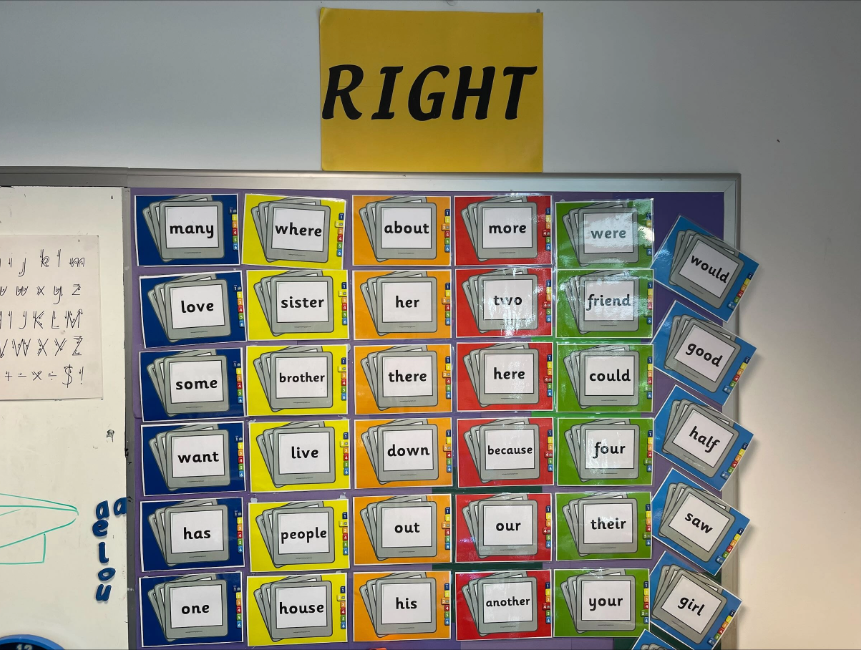
Literacy resources at Penleigh and Essendon Grammar
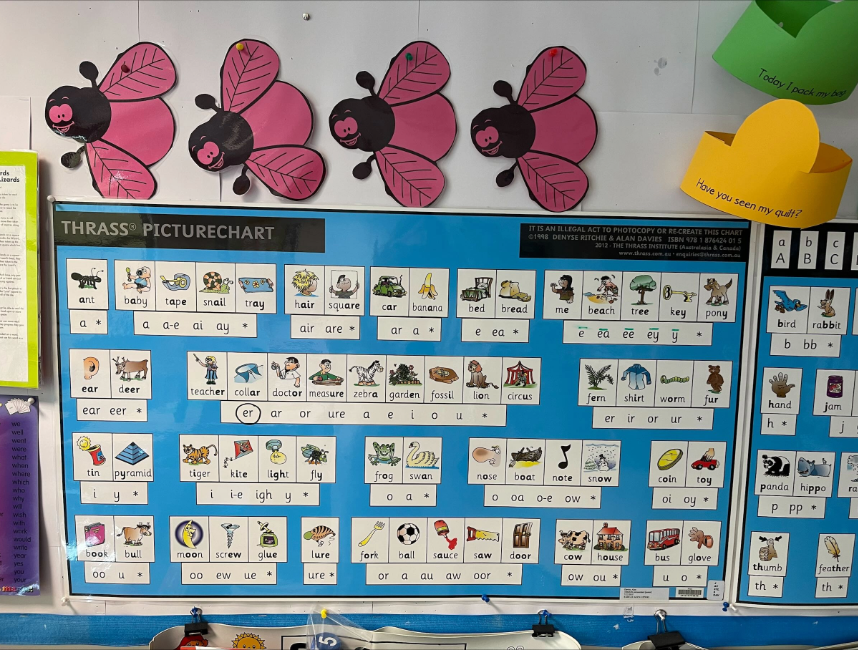
Literacy resources at Penleigh and Essendon Grammar
Q: What structural things are in place to ensure that the initiative has its best chance of success?
We have weekly lessons scheduled with Prep classes where we engage students with warm-up activities designed to explicitly teach literacy skills. The warm-up activities also provide an opportunity to model high-quality instructional practice and showcase literacy strategies and resources in action. Our Prep teachers observe or team-teach during modelling sessions and use the resources and strategies in follow on activities.
Sharing knowledge and instructional practices builds our team’s literacy strategies. We are regularly adding to their toolkits, which can be adapted to suit their own teaching style. We use an expanding range of resources, including
- sequential easy to follow PowerPoints
- flip books
- words cards and sentences
- picture cards
- floor games
- matching board games
- white boards
- magnetic letters
- simple song and dance routines
- chalk/water painting on outside pavers
- decodable big books
- materials for tracing and making stick puppets and more.
Our activities stimulate the imagination, assisting in cementing knowledge into long-term memory while our teachers have the autonomy to deliver the skills-based literacy program in ways that best suit their learners.
For example, all Prep classes focus on introducing four phonemes (speech sounds) and graphemes (the letters that represent them) in the first few days of term one. They start with S, M, A and T. It is explained that we are learning a code and how to crack the code. Within week three, the next four are introduced, C, G, O, P. Now the students can read and write over 40 real and nonsense words.
Before the end of term one, the learners are taking home a decodable book, a flip book with the eight initial phonemes as well as a ‘reading experience’ book for families to read to their child at home. In addition, six ‘camera words’ are introduced. Camera words are words that the learners take ‘a photo’ of and place in their memory and as explained, they will learn the code or how to decode as they get older. The learners will make a camera out of paper, cut the camera words, copy, trace, match, play memory and take this home. Most learners take their cameras out to play and pretend to take photos.
The Prep and Year 1 classes follow the same lesson sequence. Teachers remain responsive to their students’ needs and are informed by the progress that their students are making, moving onto the next sequence or stage when their students are ready.
Prep and Year 1 teachers are supported by a suite of ready-made resources from PowerPoints to flip books, matching games and 5-minute activity sheets. Of great importance is the alphabet friezes where the characters/pictures match those in the Phonics Hero online App. This app is another resource that aligns with the Get Reading Right Program, used widely in the United Kingdom, Singapore and recently cited by the New South Wales Education Department as a key phonics resource.
I also work closely with students who have been identified as requiring additional literacy support to provide further literacy intervention. Small group literacy intervention takes place in the Literacy Support Room. The room features a curated selection of literacy resources and displays of student work and artefacts of learning.
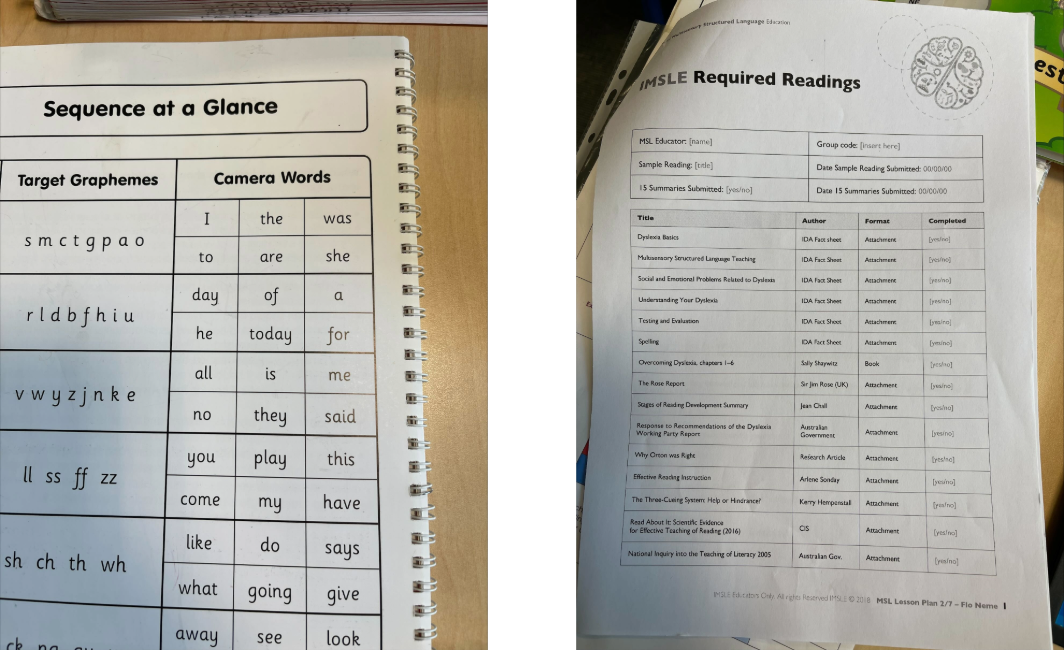
Literacy resources at Penleigh and Essendon Grammar
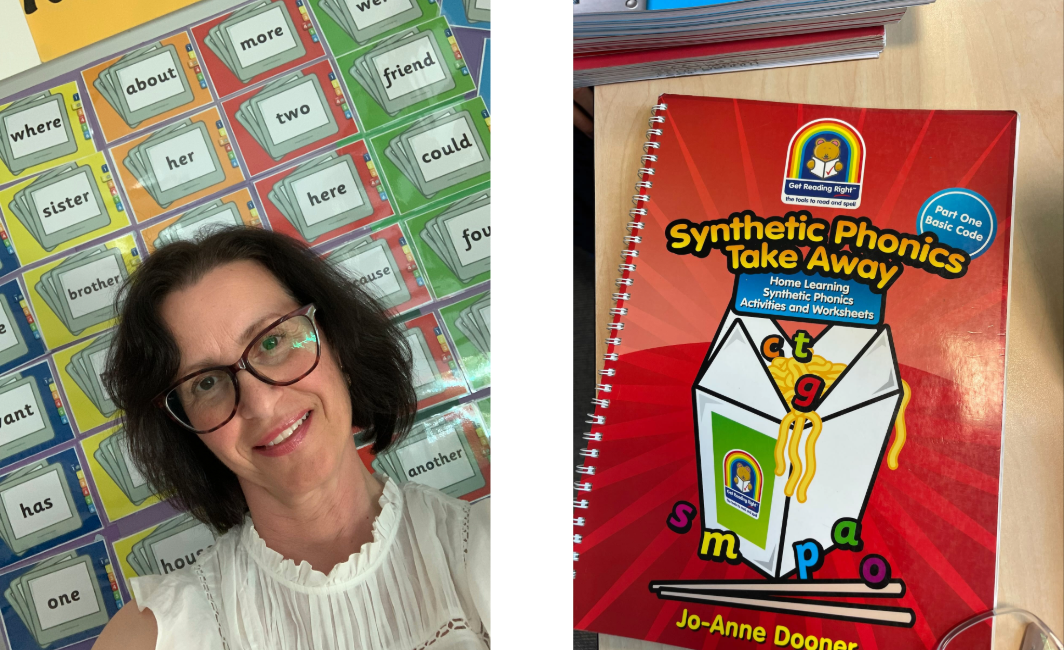
Literacy resources at Penleigh and Essendon Grammar
Q: What are the greatest benefits to staff development of this approach?
The collaborative approach and focus on best-practice, evidence-informed literacy approaches has fostered a culture where both experienced and graduate teachers are supported. Our team has extensive knowledge, and we undertake continuous professional development.
Our team is enthusiastic and energetic, which keeps the delivery of phonics fun, light-hearted and engaging for staff and learners. Movement also plays a key role in keeping 5-year-old learners engaged too. Using letters, V, W, X and Y, I created the ninja laser routine. It begins with arms by your side, lift and cross making an ‘X’ shape and the sound of ‘X’. Next make the peace sign on both hands and you have ‘V’ and make the ‘V’ sound, bring the V’s together and you have ‘W’, criss-cross your hands to make ‘Z’ with laser sound effects and arms down.
Through curriculum planning and resource development our teachers continuously build upon program resources, enabling them to be adaptive in their teaching practice and choose an approach that best meets the needs of their learners.
Q: What have been the benefits to learner outcomes of this approach?
The RTI approach is ideal. In the Literacy Support Room our learners have autonomy. They understand quickly that we are all different and learn differently. We practice being patient but most of all they develop self-efficacy and advocacy along with pragmatic skills. Once this is established, in privacy, away from their peers the learners want to learn to read.
We have high engagement levels in the learners who attend small group literacy intervention sessions. On appearances, the sessions look relaxed and fun but they are targeted and highly structured. The students enjoy the predictability of a warmup, intense concentrating-learning time, followed by a game of their choice.
The repetition of sound-letter knowledge is key to the success of the program and our students thrive from the predictability and routine that this synthetic phonics approach relies on.
Our small group intervention develops the following key literacy skills
- confidence to communicate ideas verbally and in writing
- automaticity – the ability to commit the sounds to long term memory and recall with minimal effort
- confidence in decoding and blending sounds to create real and nonsense words
- reading with automaticity, prosody (the patterns of rhythm and sound used in poetry) and comprehension.
Overall confidence increases when our students master these skills. For example, when decoding words aloud eventually becomes an internal process, the actualisation of ‘I can read’ is like watching fireworks, it’s simply amazing.
Play-based and hands-on learning features prominently in our small-group literacy intervention lessons too. It is important that the literacy intervention lessons are fun and engaging so that it is something the learners look forward to attending.
For example, Year 1 students recently undertook a Lego project where they built and experimented with Lego pieces and discussed which pieces they needed to build their creation. Once under construction they needed to describe the features of the creation and what they might name it. The learners were very creative.
The next task involved them writing and dictating a “tall tale” combining all Lego creations into one. Before they started to write, learners were provided with some verbal examples of opening lines that capture the audience. We noted that the Zack Power and Ben Ten series were popular, and we decided to use these examples to unpack characters’ features and provide inspiration to inform their own story writing.
Whether it was discovering new words like amphibian, which one student used to describe his military vehicle Lego creation because it could travel on both land and water, or brainstorming homonyms that go with a particular descriptive word, throughout the tall tale writing activity students were learning and acquiring foundational reading and writing skills.
These stories come alive when photos of the Lego creations are taken and made into short videos using iMovie. I add music, sound effects and narration. The joint project is premiered in an assembly for parents and the school to enjoy. The learners are asked to discuss their Lego items in front of the school and many students tell us it’s the best day of their lives!
Q: What plans does your workplace have to take this approach forward?
The junior school boys’ timetable is structured so that literacy learning is blocked in the morning and continues to align our literacy support session with the classroom timetable.
This year, workshops with our professional learning communities will include extensive curriculum developed with the focus on further improving literacy outcomes in the classroom.
The continuous turnover of decodable and learning experience books (take home books) are monitored, replenished and sorted to maintain the highest quality.
Looking ahead, our vision at PEGS is to embed the sequence of Jo-Anne Dooner‘s Get Reading Right Literacy program into the Year 2 curriculum to complete the code. With several American programs flooding the English market, the importance on developing teacher knowledge is greater than ever. Navigating through the materials marketed as best practices, trialling resources that stimulate and inspire while aligning with current research is important for our team.
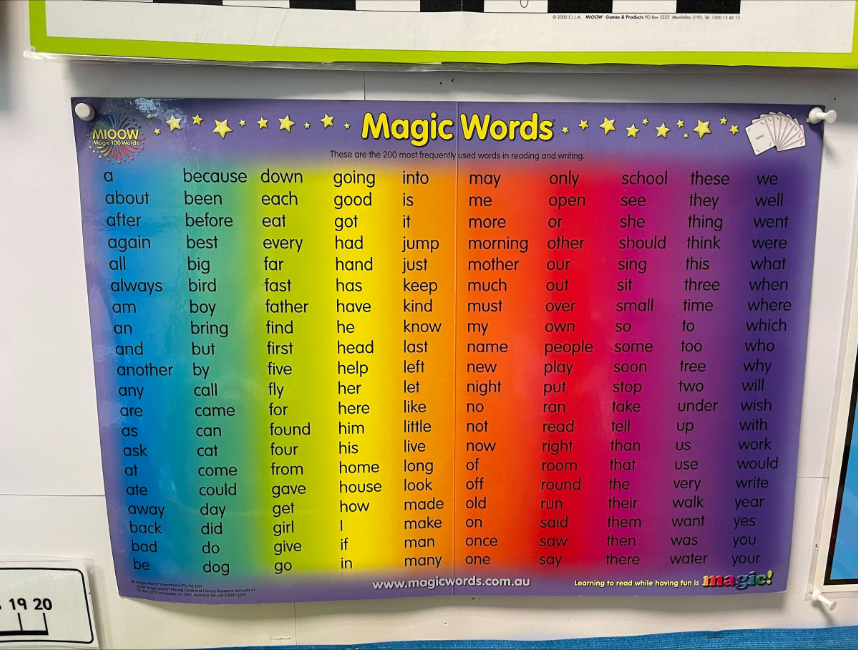
Literacy resources at Penleigh and Essendon Grammar
Do you have an example of outstanding work in your school or early childhood service? We’d like to consider showcasing it the Excellence in Teaching section of our website. Send your example and contact details to vitcomms@vit.vic.edu.au.
